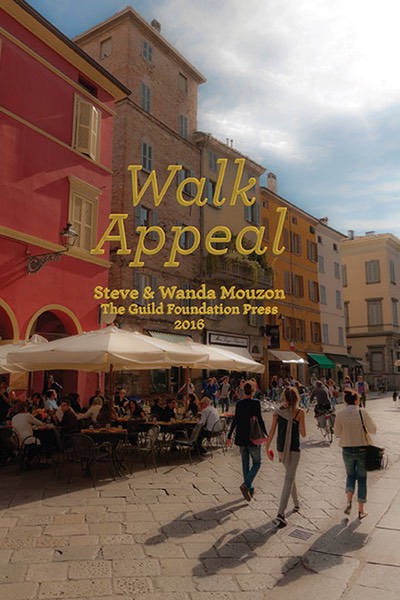search the Original Green Blog

Do we want a cup of coffee that is merely drinkable? A meal that is just edible? A book that is only readable? Of course not! We want things that are aromatic, delicious, and engaging! So why should we settle for places that are merely walkable? Why not places where we love to walk?
35 years ago, walkability was a high and noble goal because the default settings of city-building created such hideously unwalkable places. But thanks in large part to the New Urbanism, we have learned how to build walkable places again. Walkability is now commonplace in places that adhere to New Urbanist principles. Today, we need a higher standard.
A place with strong Walk Appeal is one where it’s appealing to walk, not one where we’re merely able to walk. And Walk Appeal is one of the strongest indicators of the economic health, environmental health, and public health of a place.
Healthy Walk Appeal drives the prosperity of neighborhood businesses, and can even make the difference between failure, surviving, and thriving. And those neighborhood businesses have many benefits for the neighborhood, including eliminating food deserts, allowing people to make a living where they’re living, letting people walk to daily needs, and keeping the neighborhood safer because there are more eyes on the street.
Good Walk Appeal benefits the environment in several ways, especially including these two: It’s obvious that every trip on foot or on a bike burns fat instead of gas, keeping us healthier and wealthier, and keeping the air cleaner. What’s not so obvious is that when we spend time outdoors, we get acclimated to the local environment so that when we return indoors we may be able to throw the windows open and leave the air conditioner off. And there is no equipment so efficient as that which is off.
The greatest benefit of strong Walk Appeal, however, is what it does to our bodies. Places where people walk 10,000 steps per day as part of their daily activities have been proven to be healthier than those where people walk less, all other things being equal. Our obesity epidemic has ballooned as our walking has dwindled, and it brings many life-threatening illnesses such as heart disease and diabetes.
Finding a characteristic of the built environment that has such a powerful influence for good in making us healthier, or making our environment healthier, or making our neighborhoods healthier is wonderful. Finding a characteristic that does all three is far better. Walk Appeal is that characteristic, and it’s time to start improving it all across America.
~Steve Mouzon

You'll receive an email from me with the subject line "Mouzon Design: Please Confirm Subscription." Click Yes to confirm your subscription for Walk Appeal book updates.
Legacy Comments
Steve Dombek · Saint Petersburg, Florida
Steve, a little while back I tried introducing the idea that nearly all American streets are "One-Sided" places (even our good Main Streets), whereas the most beloved streets around the world are often "Two-Sided" places. It's a concept that's more easily illustrated with a few examples (make sure to play the GIF):
https://mobile.twitter.com/Stev.../status/658686569709105152
What makes a street into a Two-Sided place? I think it needs at least three things: (1) people-scaled amenities on both sides (e.g. shops, housing, parks) with minimal dead space, (2) a center "thoroughfare" that's either pedestrianized or very slow-moving shared space (people need to be able to walk down the middle and cross side-to-side with ease), and (3) a width that's narrow enough to create a sense of unified space. Most American streets are too wide for that last point and would need a median treatment of some kind -- imagine adding a strip of park space down the center, or a row of small market stands or food carts.
Steve Mouzon · Board Member at Sky Institute for the Future
Several good ideas here, Steve... thanks! Street width is definitely a battle we fight in the US. At best, an American Main Street is likely to have a 1:3 enclosure ratio unless buildings are 3 stories or taller. I like what we've done on Washington Avenue in Miami Beach, where there are multiple crosswalks in the median to encourage people to cross mid-block.
Jan 12, 2017 7:16am
451+


